Pair Moccasins Item Number: E411790-0 from the National Museum of Natural History
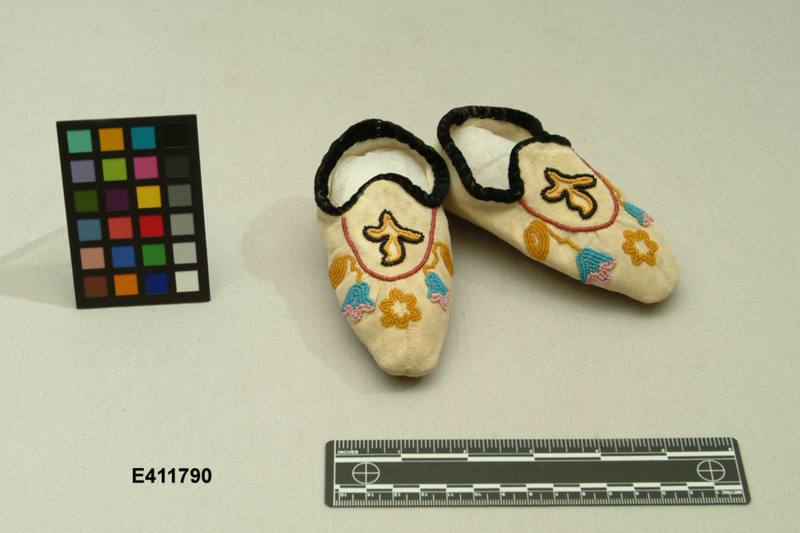
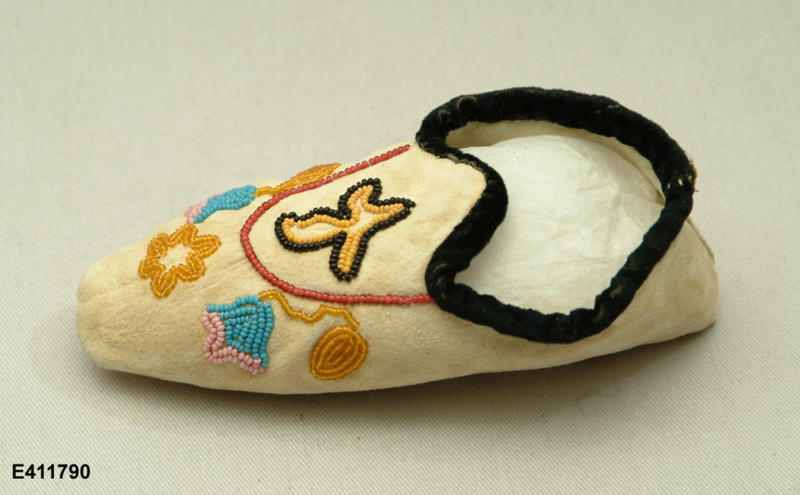
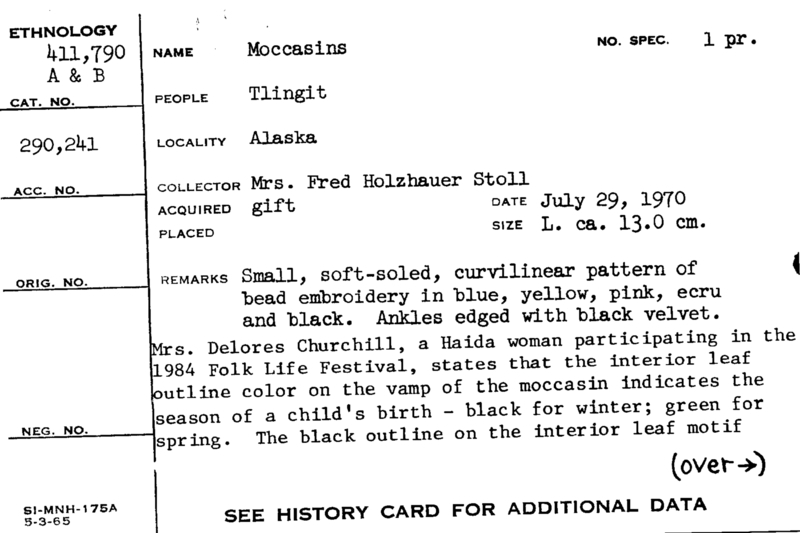
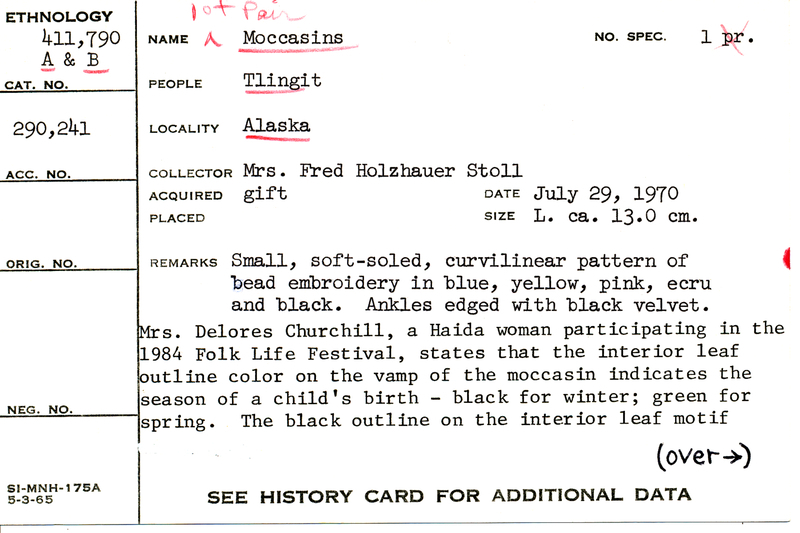
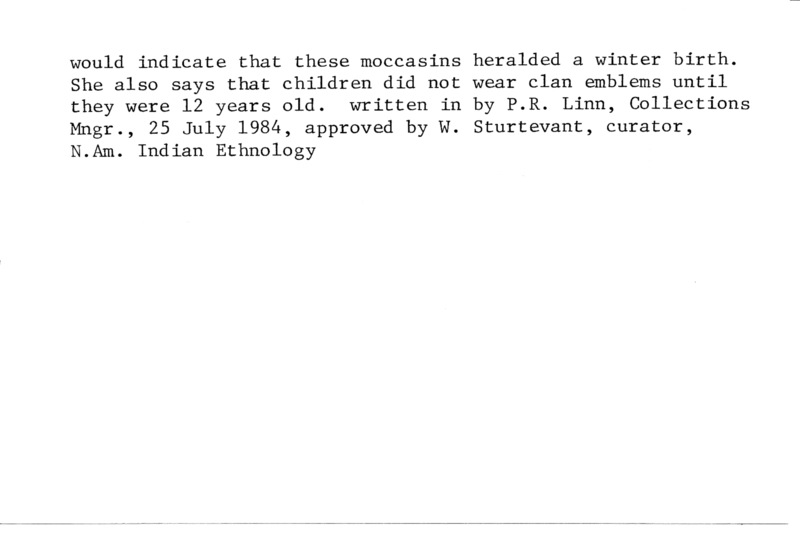
Notes
From card: "Small, soft-soled, curvilinear pattern of bead embroidery in blue, yellow, pink, ecru and black. Ankles edged with black velvet. Mrs. Delores Churchill, a Haida woman participating in the 1984 Folk Life Festival, states that the interior leaf outline color on the vamp of the moccasin indicates the season of a child's birth - black for winter; green for spring. The black outline on the interior leaf motif would indicate that these moccasins heralded a winter birth. Se also says that children did not wear clan emblems until they were 12 years old. written in by P. R. Linn, Collections Mngr. 25 July 1984, approved by W. Sturtevant, curator, N. Am. Indian Ethnology."Ruth Demmert and Florence Sheakley, elders and beaders, and Virginia Oliver made the following comments during the Tlingit Recovering Voices Community Research Visit, March 13-March 24, 2017. This pair of baby moccasins has size 14-16 beads in the design, and is lined with velveteen around the ankles. The bottom of the moccasins are clean, so they were probably only worn when going out or for decoration. Chinese shoes also often have pointed toes, so the change from rounded-toe to pointed-toe moccasins may have been due to contact with Chinese workers in Wrangell.Illus. Fig. 1.10 p. 52 in Smetzer, Megan A. 2021. Painful Beauty : Tlingit Women, Beadwork, and the Art of Resilience. Seattle: Bill Holm Center for the Study of Northwest Coast Art, Burke Museum : University of Washington Press. https://muse.jhu.edu/book/85691/ .
Item History
- Made in Alaska, USA
- Collected in Alaska, USA between 1893 and 1902
- Received from Mrs. Fred H. Stoll on July 29, 1970
What
- Name
- Pair Moccasins
- Identification Number
- E411790-0
- Type of Item
- moccasin
Who
- Culture
- Tlingit
- Received from
- Mrs. Fred H. Stoll
Where
- Holding Institution
- National Museum of Natural History
- Made in
- Alaska, USA
- Collected in
- Alaska, USA
When
- Collection Date
- between 1893 and 1902
- Acquisition Date
- on July 29, 1970
Other
- Accession Number
- 290241